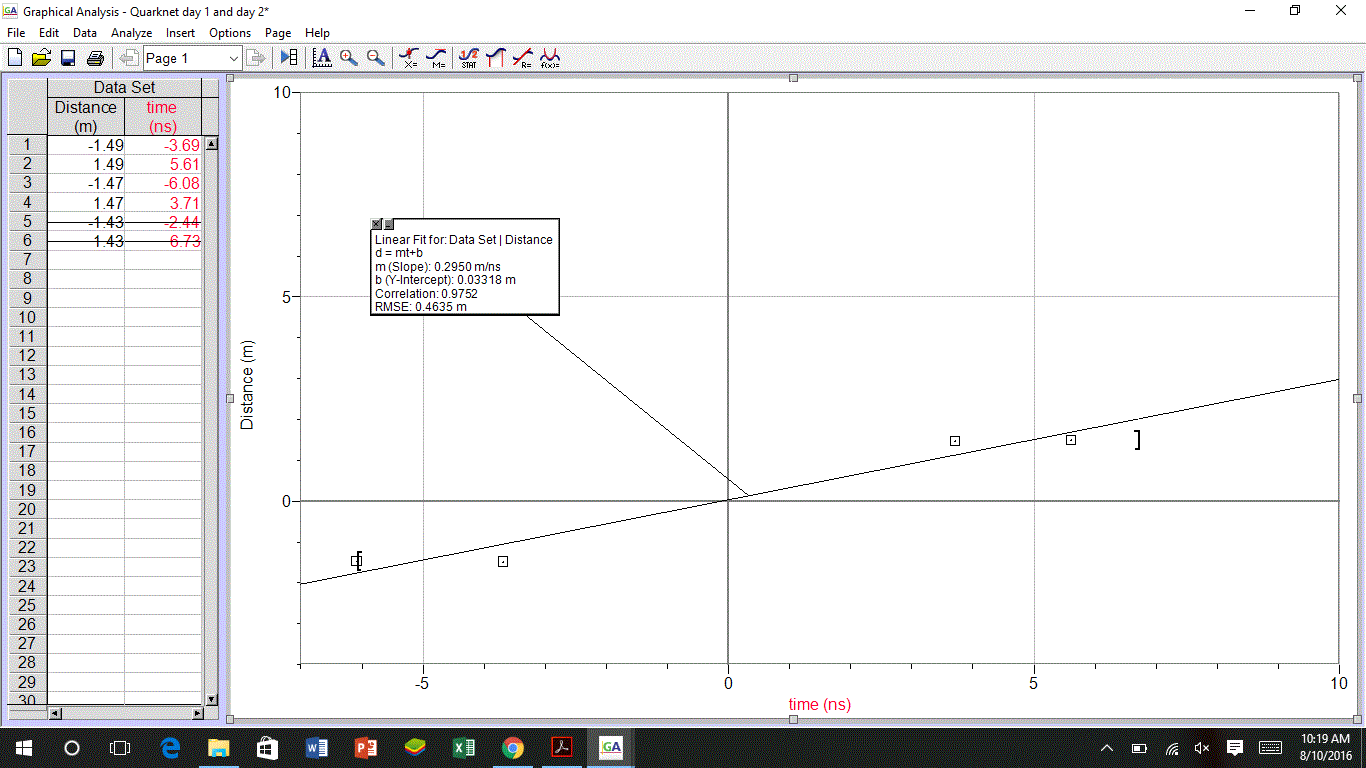Time of Flight Aug 8th and 9th
Quarknet Workshop
08/09/2016
Abstract
Abstract: Muons are produced when cosmic rays collide with particles in the Earth’s atmosphere. These muons fall to Earth and can be detected using the Cosmic Ray Muon Detector (CRMD). The data collected was distance and time for muons between the first and fourth counter. The counters were in the same location as the experiment was run. The orientation of the counters remained the same throughout, but the stack was inverted during a few trials. The distance between top and bottom counters was about 1.5 meters apart.
Introduction
Our data shows that a Muon can travel very close to the speed of light. Other research done has shown that munons travel at 98% of the speed of light which is 2.91m/s which is 2.91 x 108 m/s.
Procedures
Procedures: We set up the experiment to determine the average speed of the muon particle as they travel through the detector. Detector (6875) from Holcomb High School on loan for the workshop was constructed and calibrated at the workshop and had its test run at Kansas State University. We are using the actual time of flight between detectors one and four. The mean time of travel was given over two separate days with the deck being inverted on the second day. We had an overnight collection of data so we had to average the two numbers we received from the two collections into one number. The e-Lab gives us a mean time in nanoseconds that needed to be converted to seconds. Our length value is from the distances of the 1st and 4th counter of 1.49 meters. Also graphing 1st and 3rd counter 1.47m. A time vs. distance graph was constructed to produce a slope. The slope was inverted to get speed in 295m/s.
Results
Our slope 0.295 = 2.95 x 10 8 m/s. This result was due to using 4 points and as we continue to add in our points between other counters our slope continued to drop in magnitude.
-1.49m, -3.72ns
1.49m, 5.61ns
-1.47m, -6.08ns
1.47m, 3.71ns
1.43m, -2.44ns scratch
1.43m, 6.73ns stratch
Our uncertainty values 0.048 resulting in a 4.8% error of our time with occurrences.
3.8 mean/ sqroot 3905 = 0.0608, 3.77 mean/ sqroot 12,916 = 0.0332 and 3.54/ sqroot 4755instances= 0.0513 avaraged to 0.048
Our uncertainty value in distance is 0.01 resulting in 1%.
Figures

Figure 1. graphic data of slope









Discussion and Conclusions
With only four points of data, we deduced our speed of 2.95 x 10 8 m/s. We concur that we need to collect more data over varied times of collections to insert into the data and make it more accurate.
Bibliography